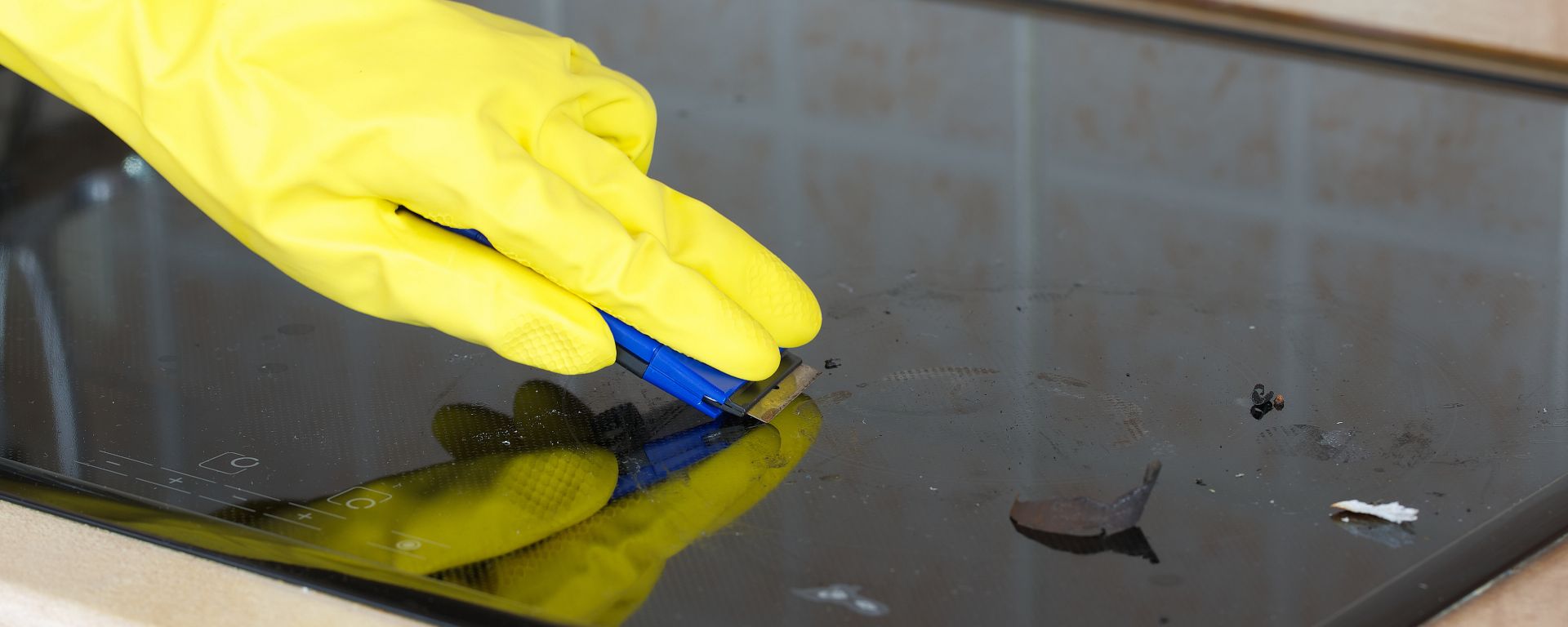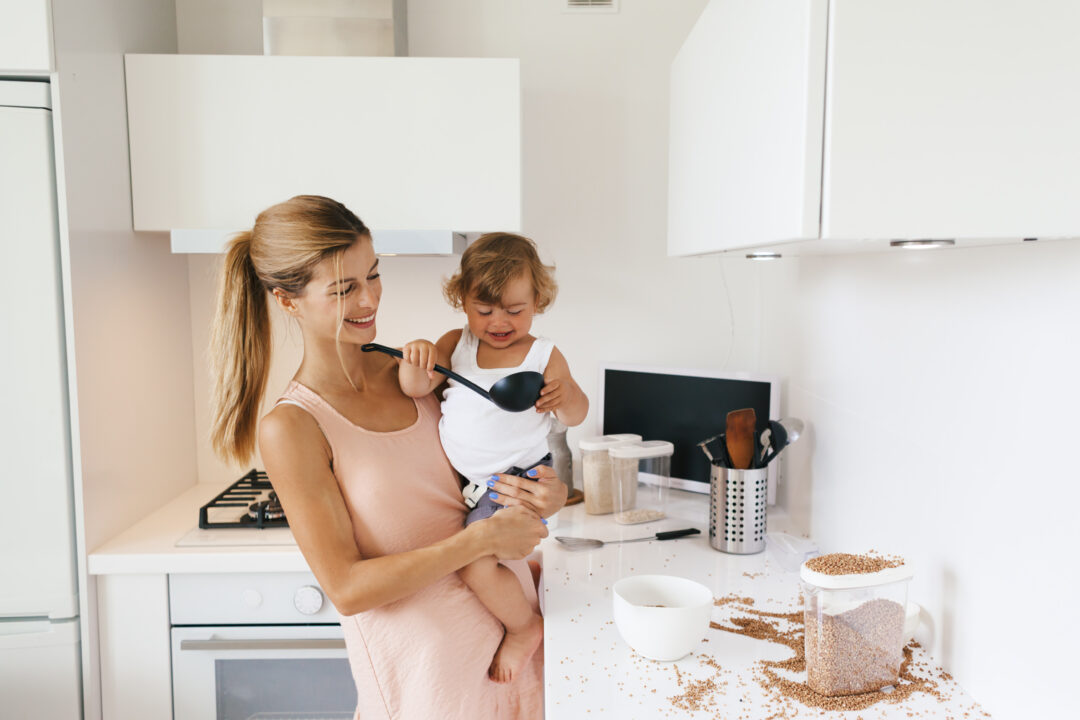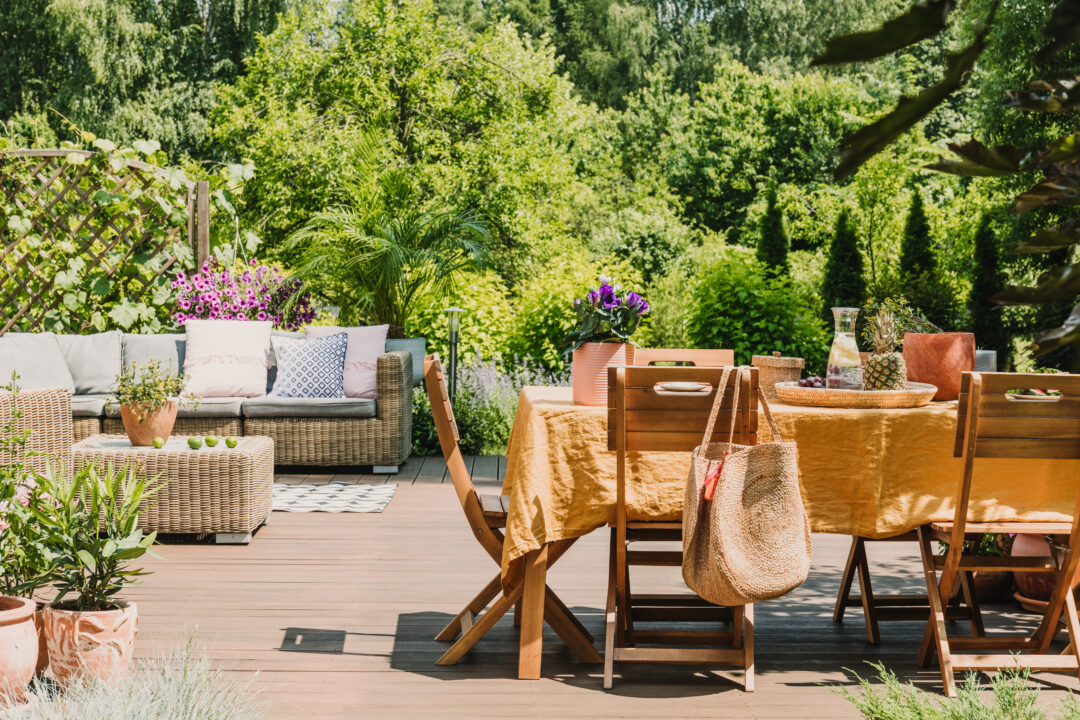A glass stovetop adds a certain look of luxury and modern design to your kitchen, but as with anything glass in your home, the smallest spills and splatters will appear quite noticeably and make it look grimey. If food items aren’t wiped up straight away after being spilled, they will, unfortunately, burn onto the glass stovetop. Luckily, cleaning glass stovetops is a breeze compared to others. Cleaning a gas stovetop is more tricky because it has parts that need to be removed and cleaned separately. Here you can learn how to clean your glass stovetop without scratching it, so it retains its premium look and matches your lifestyle.
5 Thing To Avoid When Cleaning Your Glass Stovetop
These 5 mistakes can lead to permanent damage to your stovetop:
- Abrasive sponges – there’s nothing wrong with using the soft non-scratch side of a sponge to wipe the stovetop. You should try to resist the urge of flipping the sponge and using the harsh scratchy side as it will leave surface scratches.
- Avoid using steel wool. Unlike abrasive sponges that leave little surface scratches, steel wool is too harsh and will leave your stovetop with deep crevices that get scraped out. Later on, food and residue will get stuck in these crevices and always be a hassle to clean.
- Always make sure that the stovetop is off and cooled down before using any cleaning product on it. Cleaners can burn and damage the finish if the stove is on.
- When scrubbing tough areas, don’t lean on the glass. Too much pressure can result in the glass cracking. A soft touch is best.
- Certain glass cleaners like Windolene shouldn’t be used to clean your glass stovetop. The ammonia in these sorts of products can lead to damage. White vinegar is the next best alternative.
How To Clean Your Glass Stovetop
Regular cleaning of your glass stovetop is all you need to remove residue before the stovetop looks unsightly, which can increase the chances of burning. It’s best to wipe down the glass after each use. Remember to only wipe down the glass once the stovetop has cooled down completely to prevent burns or damage.
Give your stovetop a good clean with a cleaning product or a homemade cleaning solution once a week. Apply the cleaner to the stovetop and wait for 10 minutes before wiping it off. Always use a microfiber cloth to dry and buff your glass stovetop once it’s clean.
How To Clean A Black Glass Stovetop
Black glass stovetops usually show smudges, stains, and smears quicker than other colours. There are easy ways to keep the black stovetop gleaming. In addition to wiping after each use and cleaning once a week, follow these 3 simple steps:
- Start by wiping the surface with a clean dry cloth to remove dust and residue, and prevent dust from sticking to the glass when wet.
- Soap or soap-based cleaners are a no-no. Soap often leaves residue and can make a black glass stovetop look smeared. Instead, using white vinegar is ideal for breaking down grease and residue.
- Make sure to use microfiber cloths instead of paper towels or napkins, to avoid traces being left on the glass.
Black Glass Stovetop Discolouration
A black stovetop often begins to discolour, even with regular care. This usually happens from something like food or even cleaning products that get burnt onto the stovetop, and sometimes even hard water marks are enough to discolour the black glass stovetop. To clean it, spray white vinegar over the surface of the stovetop and wipe with a microfiber cloth.
Once your stovetop has been cleaned, remember to dry it thoroughly to prevent water marks from forming.
Clean Burnt On Food From The Stovetop
Some burnt-on food residue is harder to clean. To remove these bits, one of the best tools you can use is a razor blade to scrape the burnt food off. However, you may want to check the owner’s manual as the use of razor blades may not be advised.
But if your stovetop can be cleaned with a razor blade, wet the surface with water or white vinegar first and leave to sit for at least 10 minutes. This will soften the residue and create a sort of lubricant between the blade and the stovetop. Then slightly angle the razor blade with the surface of the stovetop and gently scrape the burnt food off. Try not to use the corners of the blade as it will scratch the glass.
Cleaning your glass stovetop is important for the hygiene of your kitchen and to maintain its shine. The more regularly you clean your stovetop, the longer it will stay looking clean. Add it to the rest of your kitchen cleaning routine so that you don’t forget to do it. Remember to wipe it down with a microfiber cloth after every use to remove spilled bits of food before they burn onto your glass stovetop. Try using these steps at least once a week for a clean sparkly stovetop.








